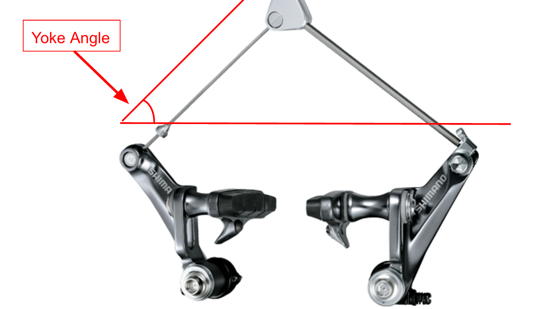I think your transverse cable has got too great of an angle, and you can adjust it to give youprovide more powerful braking actionforce.
Much of the mechanical advantage of cantilever brakes comes from the "yoke angle", the angle the transverse cable makes from the horizontal. Sheldon Brown explains this in detail on his page about cantilever geometry (it's actually more complicated than Sheldon's explanation, but it's a good approximation)
(based off cantilever brake image from Shimano)
A transverse cable that pulls vertically upwards would have no additional mechanical advantage, so would have a mechanical advantage of "1" while a transverse cable that is completely horizontal would have in infinite mechanical advantage (it's impossible to have a completely horizontal cable since once you apply the brakes, the cable will deviate). The mechanical advantage is 1/sin(yoke angle) and he provides a handy chart:
Yoke Angle (Degrees) Mechanical Advantage 90° 1 80° 1.015 70° 1.063 60° 1.15 50° 1.31 40° 1.55 30° 2 20° 2.92 10° 5.76 5° 11.47 0° Infinity!
It's hard to tell exactly what your angle is in that picture, but it looks like it's close to 60 degrees, so you're not getting much mechanical advantage from the yoke angle.
If you can decrease this angle either by shortening the tranverse cable, or by widening the cantilever arms by sliding the brake shoes closer to the rim (which would help "flatten" the transverse cable, decreasing the yoke angle), you can gain significantly more mechanical advantage. You don't want just go for the greatest amount of mechanical advantage since you'll run out of available cable travel if it's too high, but you can definitely tune the brakes for greater mechanical advantage.
There are additional cantilever adjustment tips on Shelden Brown's cantilever adjustment page.

